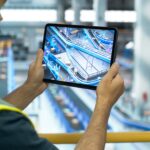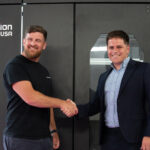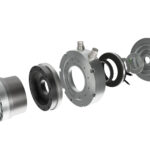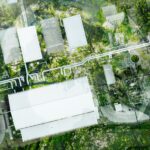As the transition away from internal combustion engines to electrically powered vehicles and
hybrids continues to gather pace, manufacturers are not only supporting the market by
designing and building new models, they are also having to completely rethink and re-structure
some of their manufacturing processes.
Although fewer traditional mechanical components are required within the drive train, this is
offset by a significant increase in the demand for cables, harnesses, connectors, busbars and of
course the all-Important battery packs needed to deliver the motive power. A key process in the
production and assembly of EV battery packs is that of welding, and this is where the power,
precision and flexibility of the laser ensures safe, consistent, and reliable connectivity.
Battery packs for electric vehicles comprise of multiple individual battery cells that are physically
joined together and electrically connected. Producing these connections presents a number of
challenges for manufacturers, including the fact that there is often a combination of different thin,
highly conductive materials of varying thicknesses which need to be joined, whilst ensuring there
is no damage to the assembly as a result of any thermal or mechanical shock.
A further challenge for manufacturers of EV’s is that of overall weight, and whilst lightweight
materials and composites can play an important role in reducing the weight of the vehicle
structure, there is also an increasing use of lightweight aluminium in the current conducting
elements of EV’s such as the cables and busbars. In the past, the use of aluminium had been
somewhat restricted due to difficulty in welding using conventional joining technologies.
However, recent advances in laser welding now enables a greater use of aluminium for both
current-conducting and structural components. Laser welding delivers precise, measured, and
localised heat input, and the advanced process control and resultant consistency from the
process makes it possible to achieve 100% good welds.
There are a number of different cell types used in the manufacture of EV batteries including
cylindrical, pouch and prismatic variants. The one thing that they all have in common is the fact
that they need to be connected by
busbars to form a battery module.
The prime objective when creating
electrical connections is to ensure
that the joint has low electrical
resistance. This minimises any
energy loss through resistance and
resultant thermal heating, keeping
the temperature of the pack as low
as possible when in operation to
maintain the highest levels for
efficiency of the battery pack.
The size of a weld has a direct effect on electrical resistance and the use of laser technology
makes it possible to produce welds which consistently meet manufacturing specifications, and
which are also of a uniform size. Furthermore, the precision of the weld location and weld depth
penetration are critical factors, and for cylindrical cells, laser welding solutions integrate real-time
weld measurement which controls weld depth and other key welding parameters. The materials
that are used to manufacture the battery module, whether for the busbar or the battery cells, are
sensitive to imperfections. The fact that laser welding is a non-contact process eliminates the
risks associated with traditional methods such as resistance welding. Any imperfections left on
the components as a result of the welding process could have a negative effect on the electrical
performance of the battery module and ultimately the electric vehicle itself.
The tight process control used for laser welding makes the busbar welding process repeatable
and faster. Furthermore, the processing consistency achieved through a combination of control
software and precision motion platforms enhances laser power stability, which in turn helps to
eliminate weld variations, a crucial factor in busbar welding.
The high uptime, reliability, and on demand availability offered by laser welding significantly
improves productivity when compared to other more conventional processes, which use
consumables and often require greater levels of preventative and scheduled maintenance. In
addition, the ability to be able to re-programme weld positions and parameters to cater for
different product variants or module designs ensures futureproofing of the initial capital
investment in the technology. Thanks to the ease of programming and high repeatability, laser
welding is considerably faster than other more traditional methods. For cylindrical cell batteries
with thousands of connections, this higher speed equates to significant production cost savings.
The technologies and processes described here are just a small part of the comprehensive
range of laser technologies and solutions available from Bromsgrove based TLM Laser.
For more information visit our website – www.tlm-laser.com








